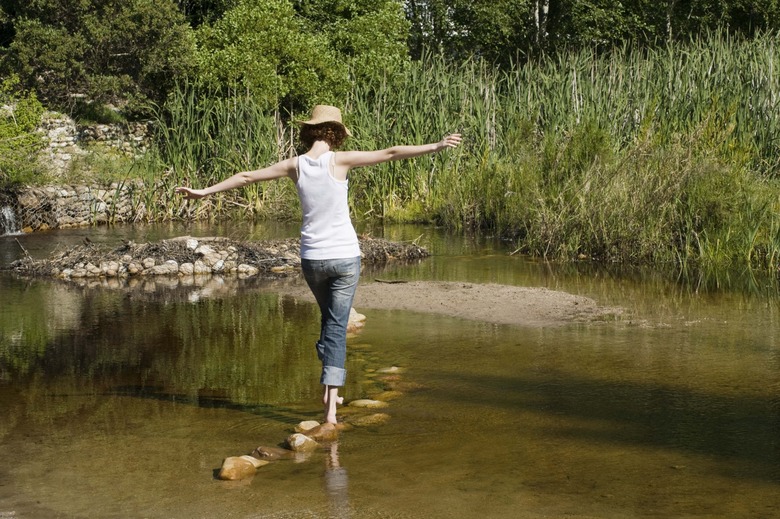Aquatic Ecosystem Facts
An ecosystem is composed of a biological community of organisms and their environment. Ecosystems are influenced by a variety of factors including the availability of resources such as light, food and water. Other factors that shape an ecosystem are topography, soil composition and climate. There are many types of ecosystems with unique environmental characteristics and species that live there.
Two Types of Ecosystems
Two Types of Ecosystems
Ecosystems can be classified into two main categories: terrestrial ecosystems and aquatic ecosystems. Terrestrial ecosystems are located on land masses and cover approximately 28% of Earth's surface. Examples of terrestrial ecosystems include desert, tundra, rainforest and alpine regions.
**Aquatic ecosystems** are located within a watery environment (aquatic environment) and cover more than 70% of Earth's surface. Examples of aquatic ecosystems include lakes, ponds, bogs, rivers, estuaries and the open ocean.
Information About Aquatic Ecosystem
Information About Aquatic Ecosystem
Some basic, important information about aquatic ecosystems is that there are two types: marine ecosystems and freshwater ecosystems. The main difference between these two types of aquatic ecosystems is the salinity (saltiness) of the water present in the ecosystem. The amount of salt in water greatly impacts the types of species that can live in a particular aquatic environment.
Marine ecosystems are located in oceans and seas around the world and provide habitat for a wide variety of specialized organisms from tiny plankton to huge whales. Marine water (salt water) is present in the vast majority of aquatic environments. Marine ecosystems are greatly impacted by water depth, temperature and light availability.
Freshwater ecosystems are characterized by non-saline water (water without salt). Freshwater ecosystems such as rivers and lakes cover less than 1% of the surface of Earth but are home to many vulnerable species of plants and animals, including 41% of all species of fish.
Freshwater Ecosystems
Freshwater Ecosystems
Wetland ecosystems include areas with shallow water and saturated soils. Examples of wetlands include mashes, bogs and swamps. Wetland ecosystems are very vulnerable to disturbance and are disappearing rapidly due to human activity. Organisms that live in wetland ecosystems include:
- sphagnum moss
- black spruce
- tamarack
- sedges
- insects
- reptiles
- amphibians
Marine Ecosystems
Marine Ecosystems
Marine environments are constantly being formed and reshaped by natural processes. Certain species of organisms such as mangroves, coral, kelp and seagrasses can significantly impact the shape of the landscape as well. The major marine environments include:
- intertidal zones
- estuaries
- coral reefs
- open ocean
- kelp forests
- mangroves
- seagrass meadows
Cite This Article
MLA
Reinbold, Joan. "Aquatic Ecosystem Facts" sciencing.com, https://www.sciencing.com/aquatic-ecosystem-9590/. 31 July 2019.
APA
Reinbold, Joan. (2019, July 31). Aquatic Ecosystem Facts. sciencing.com. Retrieved from https://www.sciencing.com/aquatic-ecosystem-9590/
Chicago
Reinbold, Joan. Aquatic Ecosystem Facts last modified August 30, 2022. https://www.sciencing.com/aquatic-ecosystem-9590/
